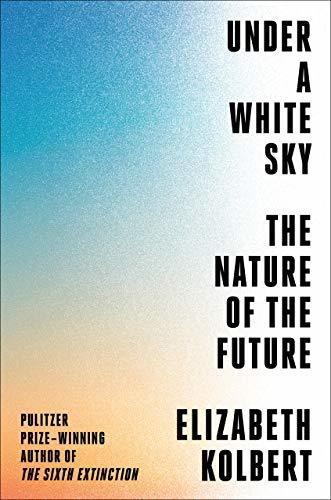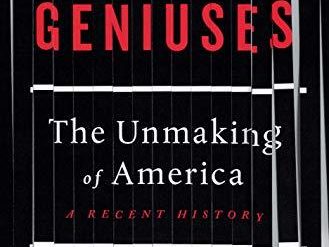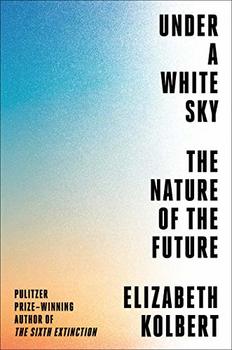
For at least 200,000 years, homo sapiens enjoyed the bounty of the Earth, rendering only minimal damage to the planet. That began to change with the advent of the Industrial Revolution in the late eighteenth century. Achim Steiner, Administrator of the United Nations Development Programme, explains. “The pressures we exert on the planet have become so great that scientists are considering whether the Earth has entered an entirely new geological epoch: the Anthropocene, or the age of humans. It means that we are the first people to live in an age defined by human choice, in which the dominant risk to our survival is ourselves.” Now, steps we have taken to better our lives are coming back to haunt us. It’s high time to change the habits that threaten the future of life on Earth.
How to reverse the control of nature
Today, all but the most isolated individual is aware of the climate crisis. It’s the most dramatic and far-reaching consequence of our continuing efforts to control nature. But the damage our species has inflicted on Planet Earth goes far beyond the carbon emissions that accelerate climate change. And it’s that damage, and what men and women are doing to reverse it, that’s the subject of Elizabeth Kolbert’s absorbing new book, Under a White Sky: The Nature of the Future. As she explains, it’s “a book about people trying to solve problems created by people trying to solve problems.”
Under a White Sky: The Nature of the Future by Elizabeth Kolbert (2021) 204 pages ★★★★☆
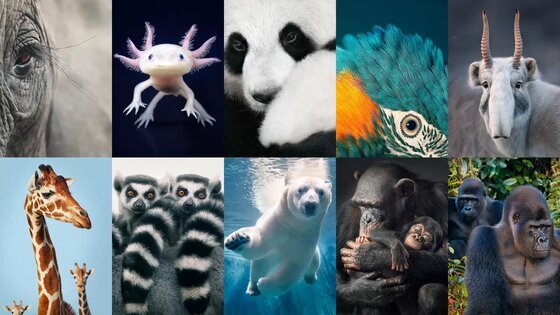
Exploring the efforts to reverse the control of nature
In a previous book, The Sixth Extinction, Elizabeth Kolbert eloquently demonstrated how human activity has triggered a massive reduction in the diversity of life on Earth. It’s only the sixth mass extinction in our planet’s history. Now she has turned her discerning eye to the efforts by scientists (and some people in business) to tackle such problems as invasive species and the loss of coastal land through flooding as well as rising carbon emissions. She has traveled widely, touching down in Death Valley, Iceland, Australia, and Switzerland. And she did not conduct typical journalistic interviews that may last an hour or three. Kolbert hangs out with her subjects for as long as a week at a time. And she gets her hands dirty.
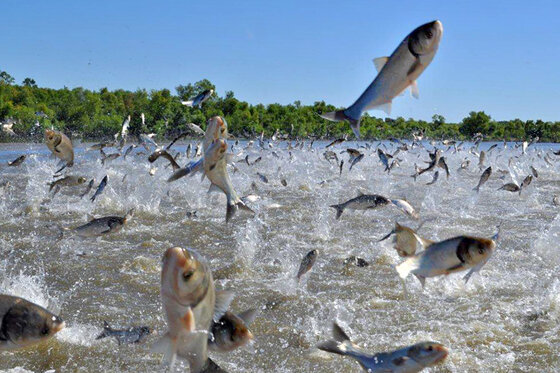
Invasive species
Kolbert opens with the reversal of the Chicago River in the nineteenth century that “upended the hydrology of roughly two-thirds of the United States.” One of the consequences was the ever-present threat that Asian carp will make their way into the Great Lakes. Asian “carp were first introduced to control nuisance algae blooms and aquatic vegetation in aquaculture facilities, farm ponds and sewage lagoons.” Now, four invasive species of carp native to Asia are leaving “a trail of environmental destruction in their wake” on the Mississippi River.
“A well-fed grass carp can weigh more than eighty pounds,” Kolbert explains. “In a single day it can eat almost half of its body weight, and it lays hundreds of thousands of eggs at a time.” And since the Chicago River, and the Chicago Sanitary and Ship Canal, were diverted to connect to the Mississippi through the Illinois River, wildlife scientists are fighting a desperate battle to keep Asian carp out of the channel. Should they reach the Great Lakes, the damage to the regional economy will be massive. This is just one dramatic example of the high stakes on the table in the efforts to reverse the control of nature.
Flood control gone awry
The United States Army Corps of Engineers is actively engaged both on the Mississippi’s northern reaches and on its southern. Though little known in much of the country, the Corps of Engineers has played a pivotal role in our history. The Panama Canal. The St. Lawrence Seaway. The Bonneville Dam. The Manhattan Project. The Corps built them all. But now, as Kolbert explains, “the Corps finds itself increasingly involved in backward-looping, second-order efforts” like erecting and managing electric barriers on the Sanitary and Ship Canal to block Asian carp from escaping to the Great Lakes.
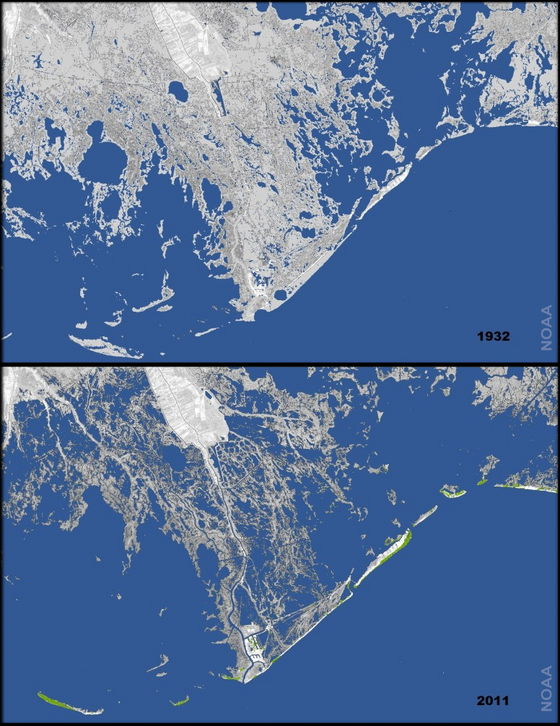
But the Corps of Engineers’ highest-profile work these days is its management of the levees, floodgates, and spillways on the lower reaches of the Mississippi. In decades past, the Corps diverted the river to minimize flooding. In part as a result, “Louisiana has shrunk by more than two thousand square miles” since the 1930s. The “vast system, built to keep southern Louisiana dry, is the very reason the region is disintegrating, coming apart like an old shoe.”
Saving endangered species and reversing global warming
In each of these scenes, Kolbert introduces us to “engineers and genetic engineers, biologists and microbiologists, atmospheric scientists and atmospheric entrepreneurs.” They’re struggling to come to grips with the unintended consequences of man’s folly and to reverse the control of nature. Every one of the people we encounter comes across as a three-dimensional human being in the author’s skillful presentation. Later, she explores what dedicated scientists are doing to save endangered species such as the Devils Hole pupfish in Nevada and coral reefs in the Caribbean. She visits a company pioneering negative-emissions technologies to absorb and sequester carbon dioxide in rocks. She shows how another invasive species, the poisonous cane toad, is wreaking havoc in Australia. There, scientists hope to use parasites and toad communication signals to combat the menace.
Using genetic engineering
Others Kolbert interviews in Australia are exploring genetic engineering. As she contends, “The strongest argument for gene editing cane toads, house mice, and ship rats is also the simplest: what’s the alternative? Rejecting such technologies as unnatural isn’t going to bring nature back. . . The issue, at this point, is not whether we’re going to alter nature, but to what end? ‘We are as gods and might as well get good at it,’ Stewart Brand” insists.
The damage we do to the planet we share
How on Earth have we managed to come so close to extinguishing life on Planet Earth? Let me count the ways.
- Introducing invasive species like the Asian carp in the USA and rabbits in Australia, whether intentionally or not
- Building cities and expanding the reach of forage for animals, thus causing us to strip the Earth bare of trees and encroach on millions of acres of arable land
- Polluting the atmosphere—and our bones—with radiation from decades of nuclear testing
- Contaminating the soil, the water, and our bodies alike with immeasurable quantities of manufactured chemicals
- Despoiling the seas with torrents of plastic waste
- And, of course, burning colossal tonnages of fossil fuels that spew forth carbon emissions which now girdle the skies above us
The problems are legion. “Atmospheric warming, ocean warming, ocean acidification, eutrophication—these are just some of the by-products of our species’s success,” Kolbert notes.
At the root of much of this misbehavior lies overpopulation—and all the human “progress” that has enabled it. Yes, we pay an enormous price for the comfortable lives we live. And the reckoning is upon us. It’s high time to reverse the control of nature that our species has pursued since the dawn of the Agricultural Revolution.
About the author
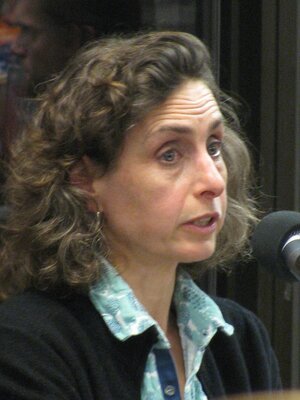
New Yorker staff writer Elizabeth Kolbert (born 1961) received the Pulitzer Prize for her sweeping survey of The Sixth Extinction. Both that book and Under a White Sky as well as other examples of her writing examine aspects of the environmental chaos caused by human action in the Anthropocene. Under a White Sky is her fifth book to date.
For further reading
This is one of The best books of 2021.
I reviewed Kolbert’s Pulitzer Prize-winning book at Are we living through the Sixth Extinction?
Check out a host of other Good books about climate change, including both nonfiction and fiction. I especially recommend The Uninhabitable Earth: Life After Warming by David Wallace-Wells. The review is at Climate change is worse than you think—much, much worse.
I’ve reviewed many other popular books about science. See: Science explained in 10 excellent popular books (plus dozens of others).
And you can always find my most popular reviews, and the most recent ones, plus a guide to this whole site, on the Home Page.

